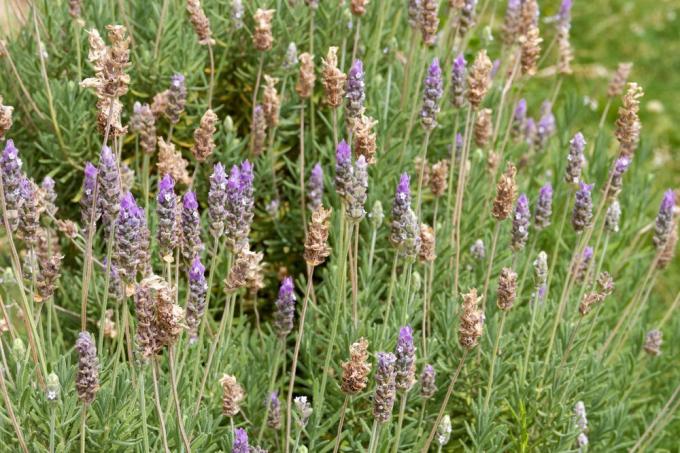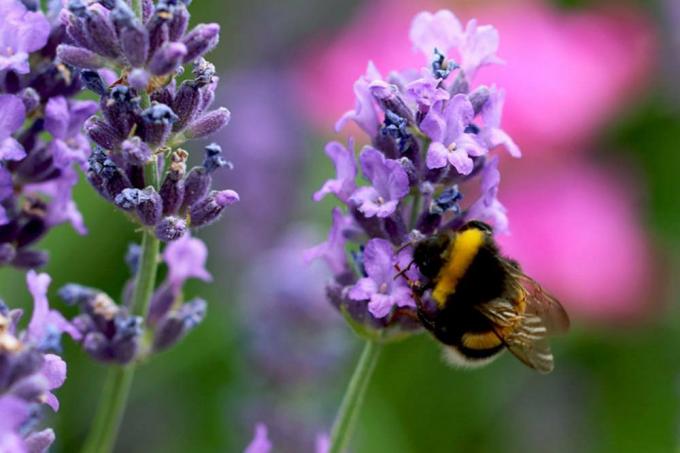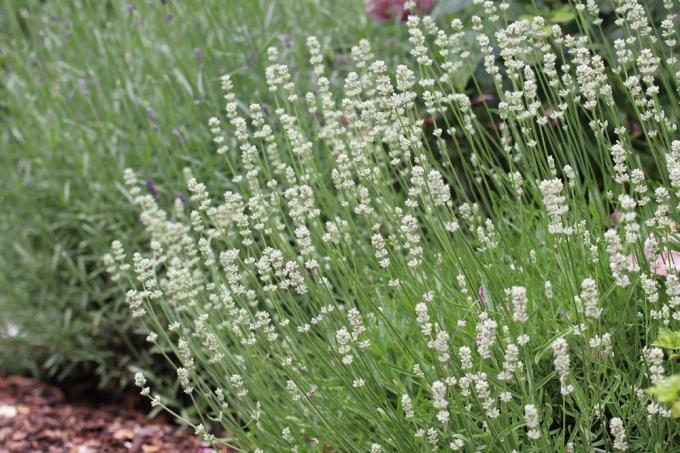
table of contents
- Lavender dies
- Wetness and moisture
- Lack of space
- Overfertilization
- Location
- Cut back
- Mulch
- Diseases and pests
Many hobby gardeners consider lavender to be an almost certain thing when it comes to flowering and robustness. It is not for nothing that this friend of all bees and bumblebees adorns numerous front gardens and plant beds. Still gets Lavandula Angustifolia always problems and comes in. We explain why and what you can do about it.
Lavender dies
Common causes and remedial measures
Of course, not every single problematic lavender can be saved with the help of the following measures. Because again and again there are very individual reasons to book, which unfortunately can only be fathomed in the context of an equally individual cause research. However, the most common causes occur again and again, so that at least the most common sources of error can be found and eliminated using the following list.
Wetness and moisture
If your lavender leaves the leaves hanging and at the same time turns them increasingly brown from bottom to top, moisture is the most obvious cause. To be precise, it dies because the roots cannot cope with the excess of available water and are attacked by putrefactive bacteria.
remedy
- Take the plant out of the pot or soil
- Cut off rotting root areas
- Replace the immediate root environment in the field, completely replace the soil in the plant pot, ensuring that the drainage holes in the pot function properly (place a pottery shard, etc.)
- Replace the lavender plant and water it only moderately
Attention: If rotting roots are pruned, the central taproot of the lavender must not be damaged. If it is damaged, the likelihood of saving the plant is significantly reduced.

Note: Although one often taps too little water in the case of a drying plant, in our part of the world this is rarely the cause of lavender. The plant actually comes from southern regions and is adapted to barren soil with very little water storage capacity.
Lack of space
If Lavandula Angustifolia withers slowly but continuously, a lack of space could be a reason. What is meant here is not so much the space for the above-ground parts of the plant, i.e. branches and flowers, but much more the space available for the roots. If the plant runs out of development opportunities here, this also affects the visible components. The growth stops and the leaves and later twigs turn brown and die.
remedy
- Repot the plant in a larger planter
- Choose a location outdoors without direct interference from borders or poor subsoil
- Make sure there is sufficient depth for the taproot
Note: Especially in beds or plant pots that are too shallow, too much water is often stored without it being able to seep away. Therefore, in these cases, the symptoms of excessive moisture that have already been described are often associated with atrophy.
Overfertilization
Lavender is a very frugal plant that usually does not need any additional nutrients. If kept in combination with more gnawing plants, such as roses, too much fertilizer can ultimately result in a death sentence. Especially with nitrogen, over-fertilization can initially lead to the plant developing enormously in a very short time. The gardeners speak here of the fact that it "shoots into the herb". However, after two to three years at the latest, this process is reversed and the aboveground plant components first wilt, later brown and die.
remedy
- Adjust fertilizer application
- Transfer to over-fertilized potted plants
- If the bed is kept in a less fertilized location, move it, alternatively replace the soil
- Limit joint plantings to less nutrient-intensive partners
Location
Most types of lavender prefer full sun Location. If they lack the sun, they lag behind in their development. In the case of an extreme lack of light, the plant can even wither and ultimately die.
remedy
- Relocate to a fully sunny location
- Change the pot for potted plants, e.g. B. on the south-facing terrace or balcony
Note: The most widespread type of lavender with us that is suitable for partially shaded locations is the white lavender. Nevertheless, it is advisable to check both the location and the type with regard to its suitability for the location before purchasing. In case of doubt, the gardener or stand by the nursery in an advisory capacity.

Cut back
Lavandula Angustifolia would like to be cut back for a lush, dense and compact growth. It is best to prune in spring and a second in summer after Wither. If these measures are not taken, the plant will not completely die, but it will develop increasingly flaws and ever lighter growth. Inexperienced hobby gardeners in particular quickly mistake this for degeneration and general dying of the plant.
remedy
- Regular and consistent cut:
- First cut in spring
- Second cut in summer after the end of flowering
- Cut back to the young shoots
- But: No cut into the old wood, otherwise very strenuous recovery of the plant is necessary
Mulch
Many gardeners tend to generally cover planting beds with bark mulch. This should protect against excessive drying out of the soil. However, lavender does not like the permanently high humidity of the soil. The additional acidification of the earth emanating from the bark is also not good for him. The result is poor development and, in the long run, degeneration to the point of drying up and dying off.
remedy
- Remove layers of mulch
- Make sure the floor is well ventilated against moisture and waterlogging
Diseases and pests
Pests are only rarely a threat to a lavender plant. Because the essential oils contained are used elsewhere as a defense against pests and of course also protect the "producer" himself. The most common diseases are mold and putrefactive bacteria, which can usually be traced back to excessive soil moisture. The only real disease that can be found again and again is the fungus "Phoma Lavendula". Once infected, the shoots develop brown, later black spots. The fungus spreads unchecked and affects large parts of the plant. Whole shoots dry up and die.
remedy
- Removal of infected shoots
- Use fungicidal agents in the case of intensive infestation

